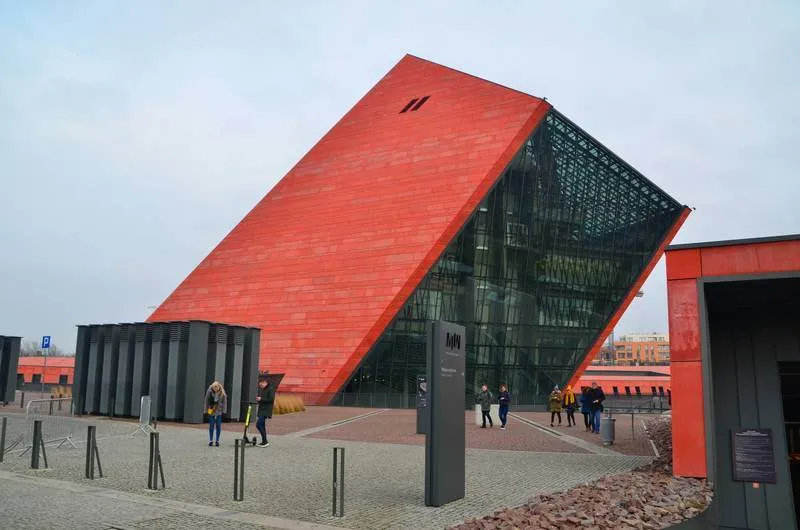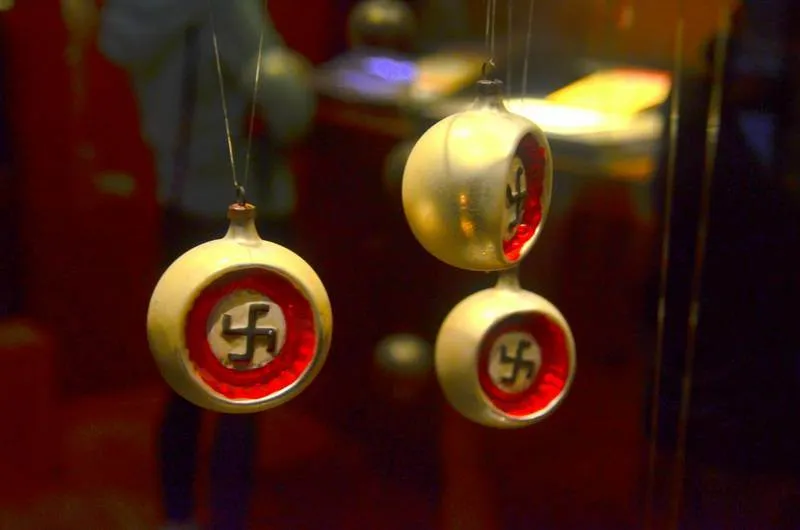Table of Contents
A weekend in Gdansk was simply not enough time.
Honestly, it was like about a day, by the time you factor everything in — arriving on Saturday afternoon after a three-hour trip from Warsaw, leaving Sunday afternoon to leave some time for another destination outside of the city… Our time here ended up feeling more like an Amazing Race adventure not against other travelers, but against the realities of opening hours in winter.
Let’s back up.
Gdansk, home to about half a million people, is Poland’s fourth-largest metropolitan area. It’s right on the Gulf of Gdansk (which opens into the Baltic Sea), and is the area where World War II started. It’s great for history buffs and fine for just about anyone seeking a throwback to an Old European Town. It’s well connected to the rest of the country by train (about a three-hour ride from Warsaw), and has decent (but not great) public transportation for getting around the city.
Look for an upcoming post on things you’ll need to know before coming to Poland and an enormous castle between Warsaw and Gdansk — for now, let’s go exploring.
Saint Bridget church — a gorgeous amber altar

Destroyed during World War II, the Catholic church was rebuilt in the 1970’s based on plans from the early 15th century. There’s some English around, though I didn’t get the sense they were really trying to be a tourist destination… even though they charged an admission fee for tourists… The ticket claims proceeds go to restore the Basilica, and it’s cheap enough to be pocket change.
The highlight here is a unique altar made of amber, which combines some of the usual Catholic religious symbols with political leaders and revolutionaries. The church was used as a sanctuary for Solidarity leaders, and was associated with worker movements — a reminder of how tightly religion and politics were connected. Even without knowing (or paying attention to) much of the symbolic meaning, it’s legitimately gorgeous. Reconsecrated in 1983 and designated a Minor Basilica by Pope John Paul II in 1992, and today is a great reason to check out Gdansk.
OK, great, but who’s St. Bridget? So glad you asked. One of the few signs in English mentions how Bridget of Sweden formed the Order of the Most Holy Saviour, or the Brigittines, in Sweden during the 14th century. After she died, her body made a pilgrimage from Rome to Sweden, and stopped at the chapel that was herealong the way. This was enough to construct a monastery under her name, and today she’s one of six patron saints of Europe.
It’s a pleasant, quiet atmosphere, like most Catholic churches. Look for an old reliquary, and perhaps for signs the crypt is open (we didn’t see any).

Name: St. Bridget’s Church
Address: Profesorska 17, 80-856 Gdańsk (GPS: 54.354516, 18.652287)
Hours: 10:00am-6:30pm
Admission: 4 zloty.
Website: www.brygida.gdansk.pl
A huge World War II museum

This modern history museum is enormous — 18 halls cover the decades of history leading up to and through the war itself. Opened in 2017 at a cost of at least $115 million, the 26,000 square meter museum has a 40 meter high ceiling to contribute to the themes of light and dark. Poland and the Polish are given the coverage you’d expect, though I didn’t sense as much melodrama, hyperbole, or victimization as seen in some of the Warsaw museums. That a court case was filed by Poland’s right-wing government in 2017 to bring the museum under its control should tell you something about how the politicians in charge want history to be seen. Another court case is still ongoing as of late 2019, and I could not tell you off-hand how much, if anything, has been changed since its opening.
None of this drama is on display at the museum, of course, and enough people were seen through the massive building on a Saturday in February to suggest attendance was decent.

Yep, those are exactly what they look like — Nazi Christmas ornaments.
It’s chronologically organized, starts in the ashes of World War I, and is not a place to bring your kids. Unless you’re looking to emulate our Amazing Race style of speedrun, allow a minimum of 2 hours to thoroughly see it, or if you’re using the audio guide. There’s plenty of English signage, and if you’re playing World War II bingo, you might get the cover all. The path through is reasonably intuitive, but not prescriptive — you are free to skip the gallery of propaganda posters if you wish, or skip ahead to the three-meter-tall letters that spell ‘TERROR’.

A wall of suitcases. If you leave unmoved from this section or a nearby section of civilians killed during war, it’s time to check your pulse.

Like other museums on the subject, they have a German Enigma machine, used to encrypt messages during wartime. While little is made of the decrypting efforts (perhaps because they weren’t done by Poland), the walls are lenticular — walk or move your head around to see the four-letter code blocks turn into the deciphered cleartext.
It’s very dark, both thematically and in terms of the light levels. More than once I found myself shining the light from my phone onto a sign to be able to read it.
Once in the building, head to the elevator and go down to the -3 level for tickets and the museum entrance. No jackets or backpacks allowed inside (use the cloakroom or nearby lockers, which take a 2 zloty coin as a deposit).
Consider this a must-see destination if you’re ready for the experience. It’s comprehensive, ambitious, but probably not immune to populist revisionists. Watch for the propaganda amidst the facts.

Name: The Museum of Second World War (Muzeum II Wojny Światowej w Gdańsku)
Address: Plac, Władysława Bartoszewskiego 1, 80-862 Gdańsk (GPS: 54.356055, 18.660512) –
Hours: 10:00am-6:00pm (closed Mondays) – until 8pm July and August. Last admission one hour before closing.
Admission: 23 zloty (free on Tuesdays)
Website: https://muzeum1939.pl
The Basilica of St. Mary

In case you missed it, there are a few churches around town. Actually, more than a few. Walk around the old town / city square area and you’ll find yourselves wondering ‘did they really need all these churches?‘ Who knows… This is one of the largest churches of its kind, and is absolutely worth the time to explore.
In retrospect, however, we screwed this up. Between being a bit tired and in a rush, we forgot the reason we came here — the Gdansk Astronomical Clock. The 15th century wooden clock was made by Hans Duringer, who was supposedly blinded after it was finished to prevent him from making another like it. I don’t think either of us realized it at the time, but it was probably up the 78-meter, 405-step tower we opted not to climb.

That there’s enough to see on the ground level to keep you busy for an hour is wonderful… but you should do better than us and actually climb the tower to see the clock for yourself. Look down while on the ground level — it’s uneven stones and hundreds of tombstones.

Name: The Basilica of St. Mary (Bazylika Mariacka Wniebowzięcia Najświętszej Maryi Panny w Gdańsku)
Address: Podkramarska 5, 80-834 Gdańsk (GPS: 54.349839, 18.653281)
Hours: 8:30am-5:30pm (on Sundays, 11am-12pm and 1pm-5:30pm). The tower’s hours are based on the time of year – as short as 10am-4pm from December to March or as long as 9am-9pm from July to August.
Admission: free to enter, donations accepted.
Website: https://bazylikamariacka.gdansk.pl
Westerplatte — the site where World War II started

In 1939, Germany invaded Poland not by land, but by sea — and this seaside area about 6 kilometers north of central Gdansk was the first to get hit. Outposts and a military installation of 200 troops fought way above their weight class against an overwhelming attack including 3,500 enemy ground troops, but eventually surrounded after a four-day battle.
Once a health resort / spa area, the dozens of signs like the one above tell the story of the area… though you’ll need to be careful to read them in the right order. Look for the numbers in the lower right corners since there wasn’t an obvious starting place.

Some areas are fenced off, with signs indicating what used to be here (a guardhouse, barracks, and curiously, a non-commissioned officer’s casino). Walk past a small cemetery to reach the highlight of the area: a mostly-destroyed building of barracks. A metal track is installed, and it’s safe to enter the ground floor or a downstairs area.
There were some signs of further development, and there’s definitely some promise to the site as a tourist destination. Right now, however, it’s only likely to be of interest to history buffs.
Getting here from central Gdansk requires a 45-minute bus ride or a 15-20 minute taxi / Uber ride. A similar local app (itaxi.pl) will also work, but be aware taxi flagfalls do NOT include any distance with them and rides on Sundays are more expensive.

Name: Westerplatte
Address: Majora Henryka Sucharskiego 70, 80-601 Gdańsk (GPS: 54.407075, 18.667019)
Hours: outdoor area open 24 hours, but little artificial light around – go during daylight hours.
Admission: free
A wonderful collection of murals
Our last major stop in Gdansk was in the Zaspa area — called the Monumental Painting Collection (Kolekcja Malarstwa Monumentalnego), this collection of over 60 murals / street art pieces is housed in a modern residential complex. Pieces date as far back as 1997, and there’s been a lot of organization along the way.

A 2012 piece from Lucas Lasnier AKA Parbo / Kid Gaucho. Most pieces throughout the complex are signed by the artist, and the powers that be also put up signs back in the day. Some of the signs are unfortunately missing or damaged, however.

From 2012, a mural commemorating the 70th anniversary of establishing Poland’s National Armed Forces by Michal Wegrzyn and Rafal Roskowinsk.
I’ve been very surprised at how few murals / pieces of street art I’ve seen throughout Warsaw (the surfaces that would have them often house ads instead), so this space is a breath of fresh air. Like Westerplatte, it’s out of the city center, but the public transportation here is both easier and more frequent. Expect to spend 20-30 minutes on a bus or tram from the central train station, and expect to spend at least an hour meandering around the many buildings.

Name: Zaspa murals / Zaspa street art / Murale Gdańsk Zaspa / Kolekcja Malarstwa Monumentalnego
Address: throughout the Zaspa neighborhood – a suggested starting point in the center of the area is Skarżyńskiego 6F, 80-463 Gdańsk (GPS: 54.388208, 18.602517)
Hours: outdoor area open 24/7, best seen during daylight hours
Admission: free
Website: http://muralegdanskzaspa.pl – download the map of the murals directly from http://muralegdanskzaspa.pl/muralegdanskzaspa.pdf.
Overall
As mentioned at the beginning, a weekend was not enough. Even a full weekend (e.g. arriving as early as possible on Saturday, or even on Friday night) wouldn’t have been enough time. Gdansk is very walkable in the city center, and the first few places are all close enough to each other. There’s more than enough here to make Gdansk an essential stop for those that enjoy 20th century history.


